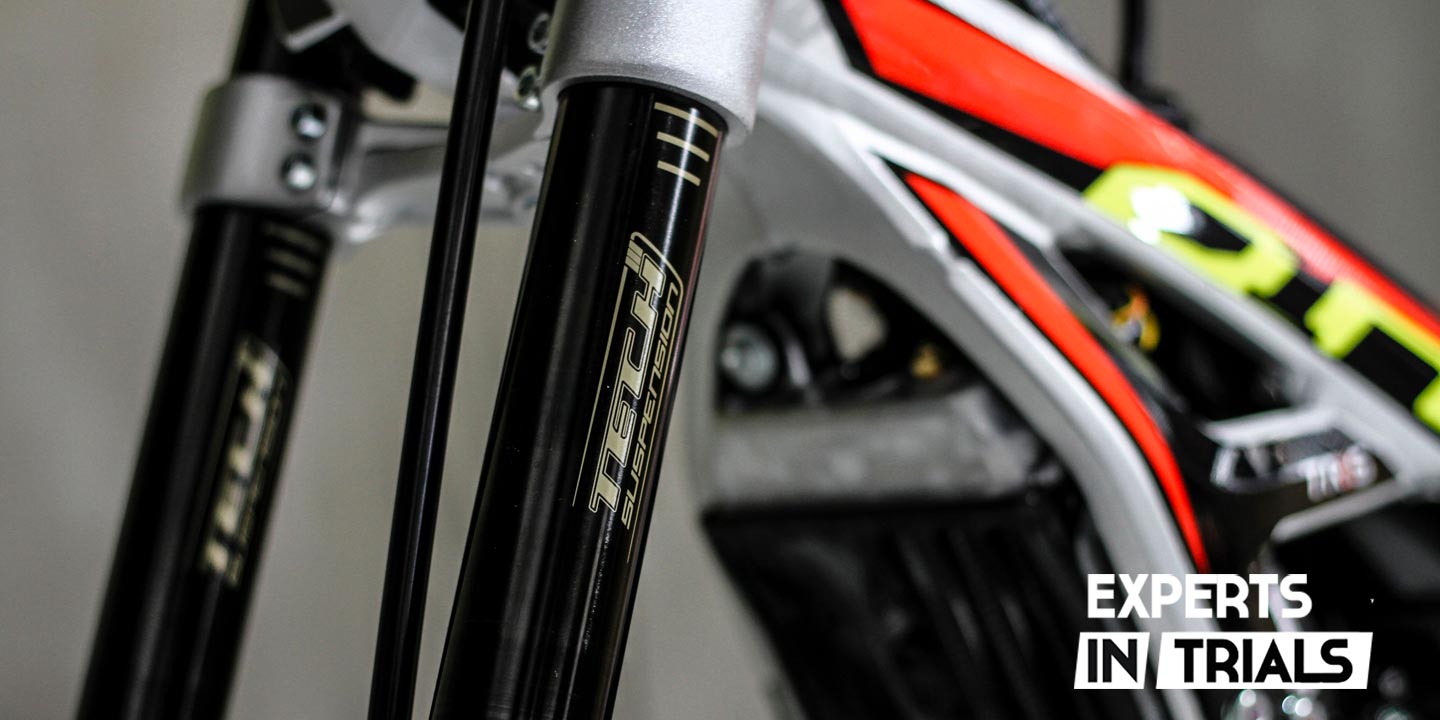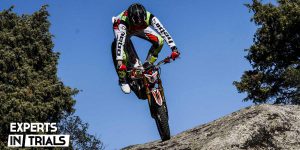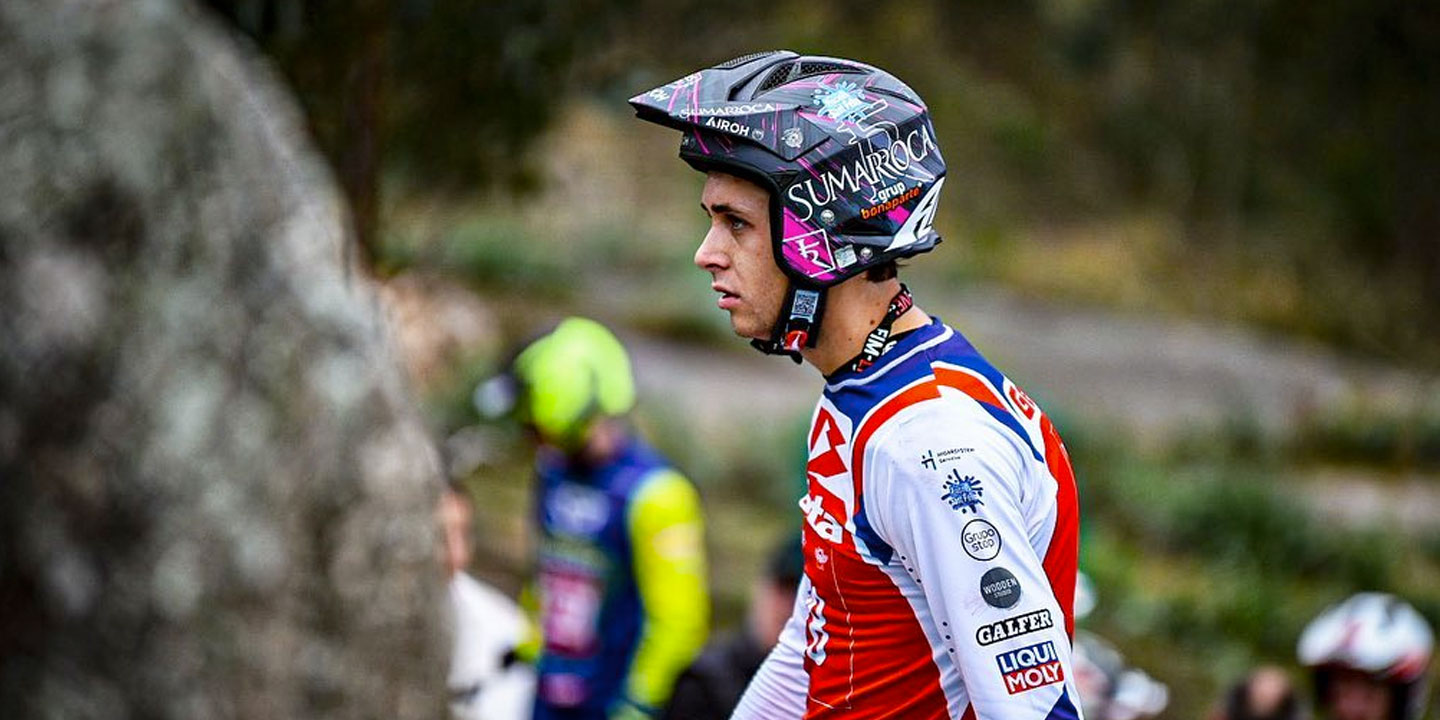
authors: SANTI RUIZ & DAVID QUER
Santi Ruiz leads this great report on suspensions. He has been passionate about trial and its mechanics for more than 30 years.
Countless times we have heard about the suspensions, their set-up, their performance and how important they are on a trial bike.
But Do we really know what extension, compression, and preload are? Or what does the inner workings of a fork or shock look like? Or how do the famous clicks of each of its settings affect? And what is 2, 3 or 4 ways?
In addition… Do we know what suspensions are for?
We wanted to make a technical and at the same time simple report, to try to get a little closer to this important part of our bike, which in addition to giving us a base when maintaining and repairing this element, helps us to better adapt the suspensions to our weight, way of riding and our particular taste, And why not, to have a little more general culture.
First, let’s define terms.
A fork or a rear shock on the trial bike (and the rest of the disciplines) perform 2 functions:
1- Cushion
2- Stay in suspension.
Damping on the trial bike
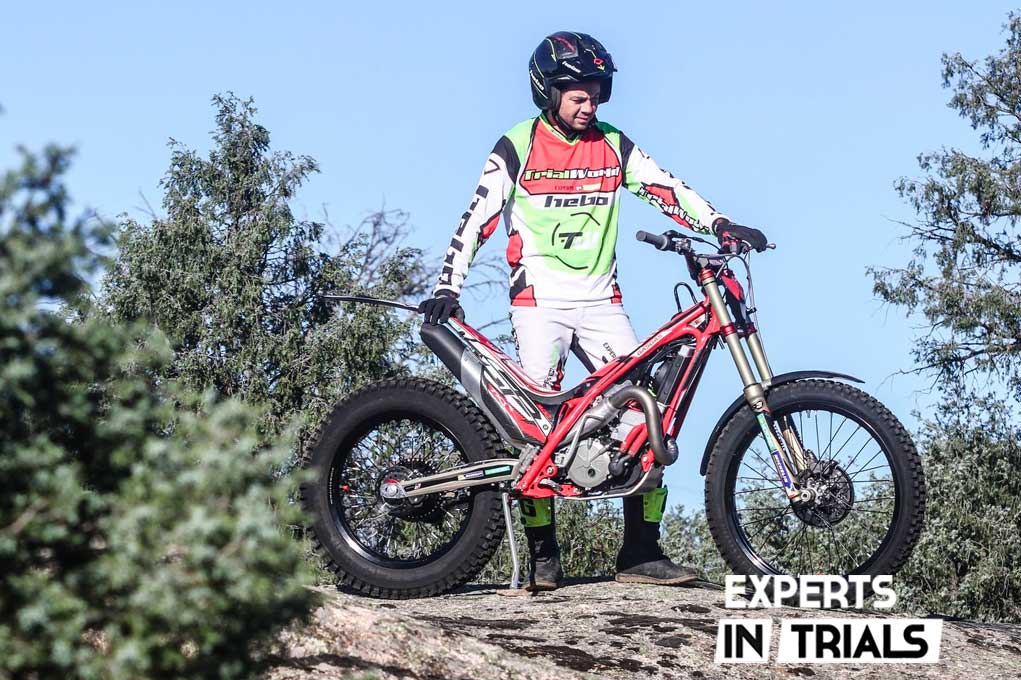
The part that is responsible for damping is the hydraulic part, which is made up of 2 movements, one for compression and the other for extension. This only deals with the speed at which a fork or rear shock compresses or extends. It doesn’t deal with hardness, but with the speed with which it does so.
This is normally done by means of a hydraulic circuit that uses different steps, more or less closed, of a more or less viscous oil, to make it move at a certain speed.
Imagine a syringe filled with water, the rate at which it compresses will vary depending on the diameter of the needle pitch, or even increase much more if you don’t have the needle attached. It will also vary its speed depending on whether we use a more or less viscous liquid. If we fill the syringe with oil, we will reduce the speed a lot for the same step.
Well, our fork acts the same, simple fluid mechanics, and also these steps can sometimes be adjustable. With the adjustment dials we can influence the oil passage to be more or less closed, with the effect that this has on the speed of compression and extension. When the action of the settings is not enough, we can change the viscosity of the oil that you call your SAE.
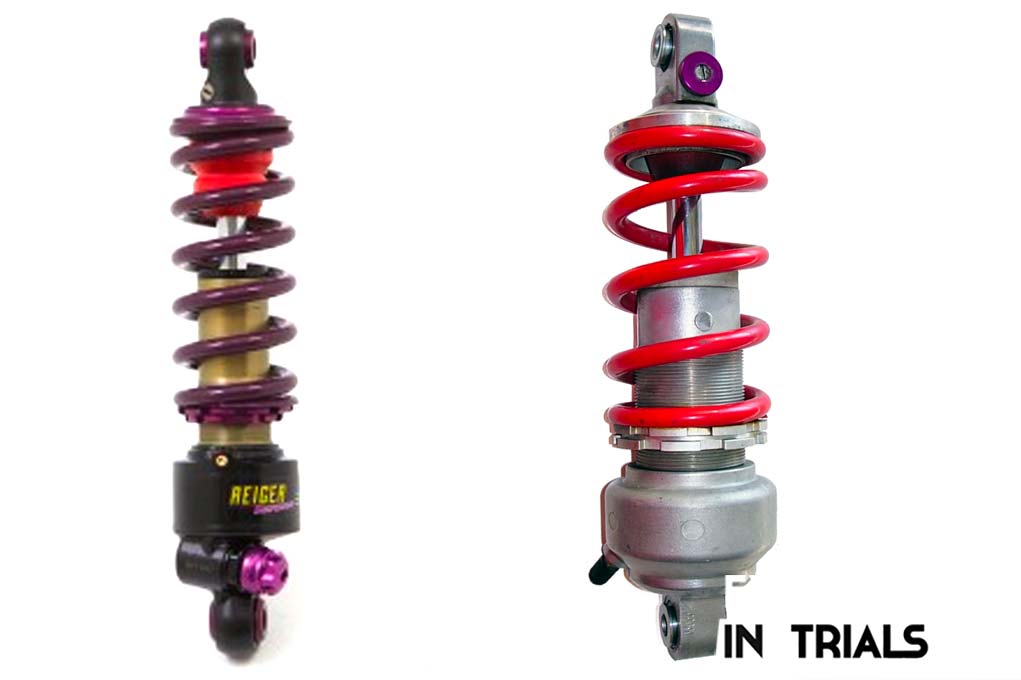
SUSPENSION ON THE TRIAL BIKE
The part that is responsible for keeping us in suspension is that of the spring or springs (we can also find suspensions that perform this same function by means of compressed air instead of spring). This spring will ensure that once compressed or extended, the fork will return to its original position, but at the speed that we have indicated with our settings.
This does deal with what we normally call “the hardness” of the suspension, depending on the tension of the suspension, it will make more or less resistance to the forces it has to withstand. If the spring is harder, more force must be exerted to complete the suspension travel. In this, it directly affects the weight of the bike and the rider.
This is where a factor comes in that we will have also heard many times. We’re talking about the sinking or SAG.
Let’s say that there are 3 fundamental measures that must be in harmony: One is the suspension with the bike on the stand, this is “0”, without sagging; another the static SAG or Free SAG, which is what sinks the suspension with the weight of the motorcycle itself with the wheels on the ground; and the third is the dynamic SAG or Race SAG, which is the sagging of the suspension with the weight of the bike and rider.
In this case we can also influence with the preload setting of the spring to change this, the more we preload the spring the more it is difficult for us to sink the suspension due to the constant of it. The more a spring is compressed, the more force must be used to keep compressing it. And when these settings are not enough, as with oil, we can switch to a spring with more or less hardness.
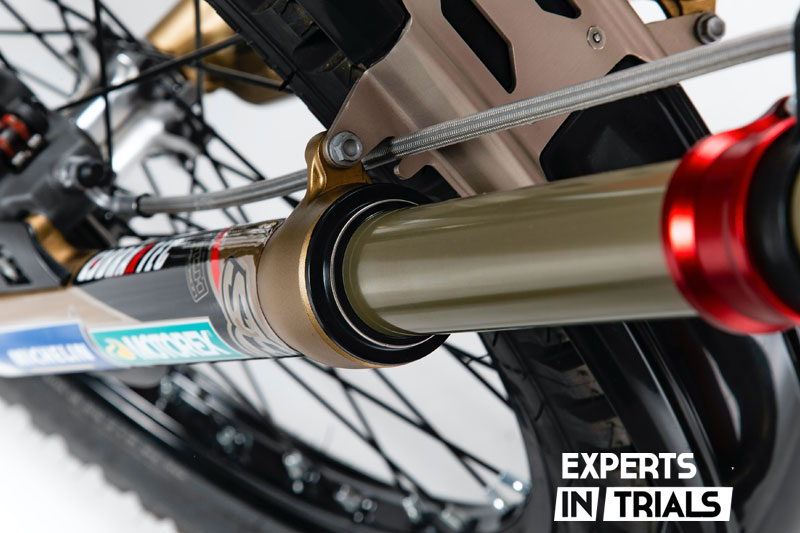
SUSPENSION ADJUSTMENT ON THE TRIAL BIKE
As standard values, on a trial bike we must be close to the following measurements for the rear suspension:
FREE SAG: only with the weight of the bike it should sink between 15 and 25 mm. (from the source)
RACE SAG: with the weight of the bike+rider it must sink between 45 and 60 mm. (from the source)
If you don’t go into these parameters, it’s because the spring doesn’t correspond to your weight. These measurements are taken between a point on the fin and the ground, or the rear wheel axle.
WHAT CAN YOU ADJUST THE SUSPENSIONS ON THE TRIAL BIKE?
In summary, we can act on our suspensions by means of 4 ways of adjustment:
- Spring preload.
- Compression speed.
- Extension speed.
I have not made a mistake when I stated 3, in fact there are 4 since there are shock absorbers such as the one in the TRRS GOLD in which the compression is divided into 2: high-speed compression, which regulates how it reacts to very strong or very frequent impacts; and low-speed compression, which affects slower receptions and movements.
PARTICULARITIES OF THE TRIAL
Now let’s try to explain what each of the functions of the suspension deals with in practice. For this we have to take into account that precisely the trial bike is very particular, since most of the problems of a motorcycle (speed for example) are minimized to the maximum, as trial is such a static sport and where sometimes, it is precisely sought to take the wheels off the ground.
As we have said, the spring keeps us suspended from the wheels, which are the ones in contact with the ground, which they must try to copy as much as possible. To do this, the spring compresses and extends the wheels in the event of irregularities. The problem is that only a spring is not able to do it in a way that gives us stability, because the energy accumulated in it would have us extending and compressing for a long time with a single impact, with the consequences that this has on the bike; Imagine if instead of one bump there are many in a row… Frequency would be lost and it would be uncontrollable.
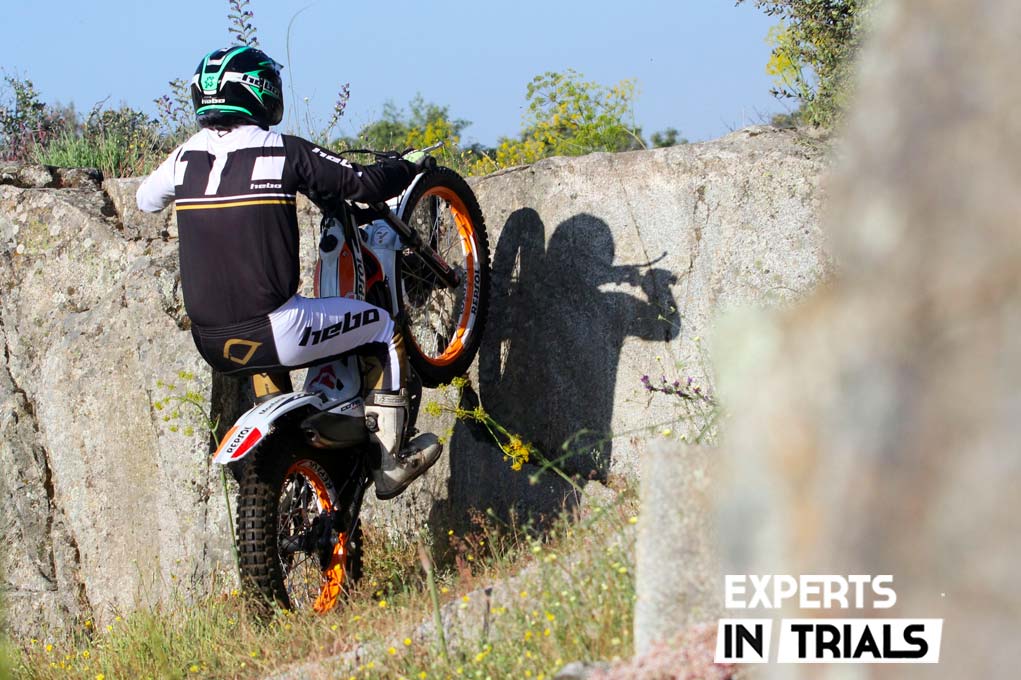
SAG TRIAL BIKE
But The spring not only serves to compress itself in the face of a “positive” bump, but it must also provide the suspension with the ability to extend in the face of a “negative” bump, that’s why, just with the weights of the bike and the rider+bike, the fork and shock absorber have that negative travel that we call SAG or sinking. This allows the wheel to also move downwards and maintain contact with the ground in the event of a depression in the ground, and therefore grip when accelerating, cornering or braking.
So the function of the spring is to exert resistance to impacts and face them without affecting the whole, so that the wheel is on the ground for as long as possible and takes advantage of all the suspension travel without stopping. This affects traction, acceleration, weight transfer, geometry, stability and grip.
THE EXTENSION
The extension deals with the speed with which the spring returns to its position, so that it is not going back and forth in an uncontrolled way as we said before. If we have a very slow or closed extension, we will gain traction and stability, it will accelerate very well, but it will make us a clumsier bike, which will find it difficult to take off from the ground when we are interested. In addition, if the dock does not have time to return to its position, with successive bumps we will accumulate negative travel and we will run out of it, being able to lose control in the face of an obstacle. If we have an extension that is too fast, it will take off very well when we dive on a step and it will be easier to fly and make changes with it, but in exchange we will have a very nervous, unstable and traction bike.
So extension plays a role in stability, agility, rebounds, take-offs and flights, changes in standing, grip and geometry.
COMPRESSION
We are left with compression, which performs the same function as extension but in the opposite direction. It helps us next to the spring to absorb the energy of an impact, providing stability. In the front end it has a great influence when braking, not allowing unwanted movements and weight transfers and incorrect geometries. Also when touching a step with the front wheel will allow us the necessary control. In the rear end, if the compression is too slow we will not have grip accelerating, if it is too fast we will feel flanking and strange movements.
It therefore affects the grip and stability when braking and biting on steps, the reception of jumps, the line and the traction of the rear wheel.
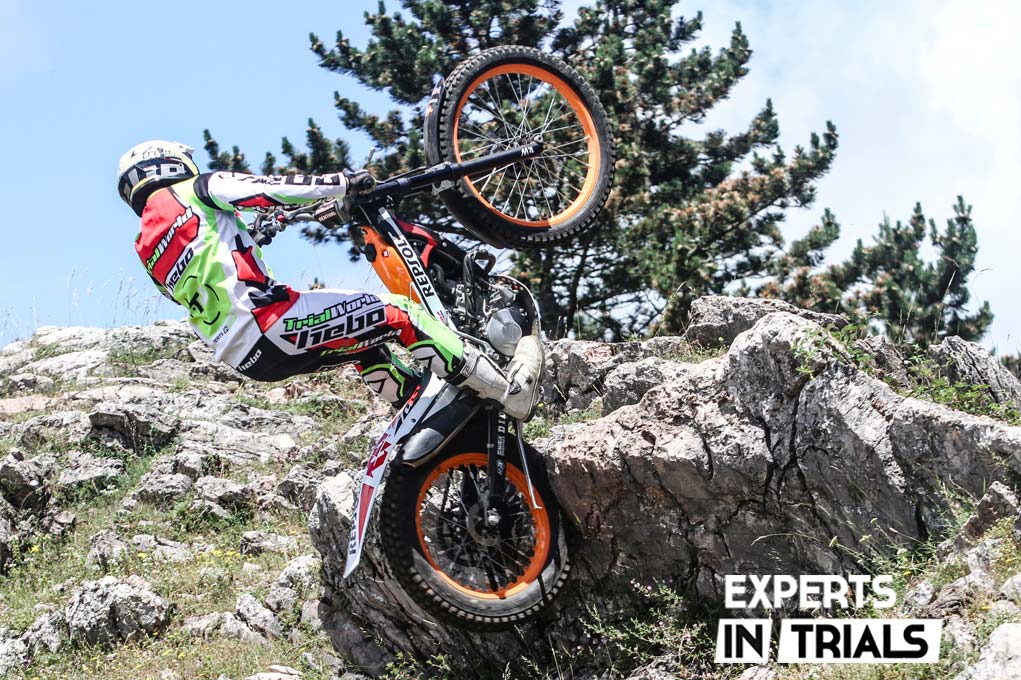
Conclusions
The world of suspensions is a very complex one, since you are always looking for COMPROMISE, if you go better in one thing you go worse in another, therefore there are no perfect and universal settings. And to this we must add that the taste of each one also influences, the terrain or types of area, whether it is dry or wet… And the most difficult thing depends not only on knowing how they work, but also on the sensitivity of the pilot when it comes to understanding what is happening.
As a recommendation, we invite you to “play” with the set-ups, but without giving it more importance than they have, the important thing is to enjoy our bike and not go crazy with this issue.
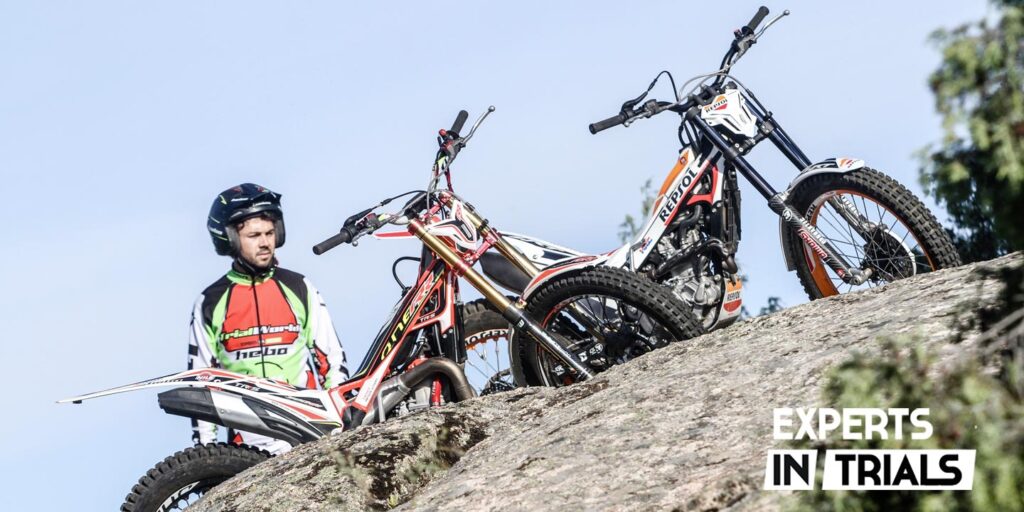
It is important to be disciplined, and every time we change something, it is one thing at a time to better understand what is happening and why it is happening. And of course, write down the original settings to return to them whenever we want. Another recommendation is that the front and rear suspension have settings that are compatible with each other and not antagonistic, there has to be harmony in the whole
WEIGHT-BASED TRIAL FORK ADJUSTMENT
In addition to the external settings that the fork itself comes with as standard, it is often necessary to work on its interior because the needs are much more extreme.
To do this, we have these options:
- Fork oil for trial bikes: we can choose between SAE 2.5, SAE 5 and SAE 7.5. That is, from a less dense oil to a denser one, respectively. The most common fork oil in trials is SAE5.
- Trial fork spring: the auxiliary industry sells springs for all brands with different hardnesses. The standard spring is usually designed for a rider weight of around 70 kilos. Above 75 kilos, we recommend thinking about changing the fork spring.
Paioli 38mm trial fork spring with three options:
(75 to 85kg, 85 to 95kg and over 95kg)
Tech 39mm aluminium trial fork spring with three options:
(75 to 85kg, 85 to 95kg and over 95kg)
Tech and Showa 39mm steel trial fork spring with three options
: (75 to 85kg, 85 to 95kg and over 95kg)
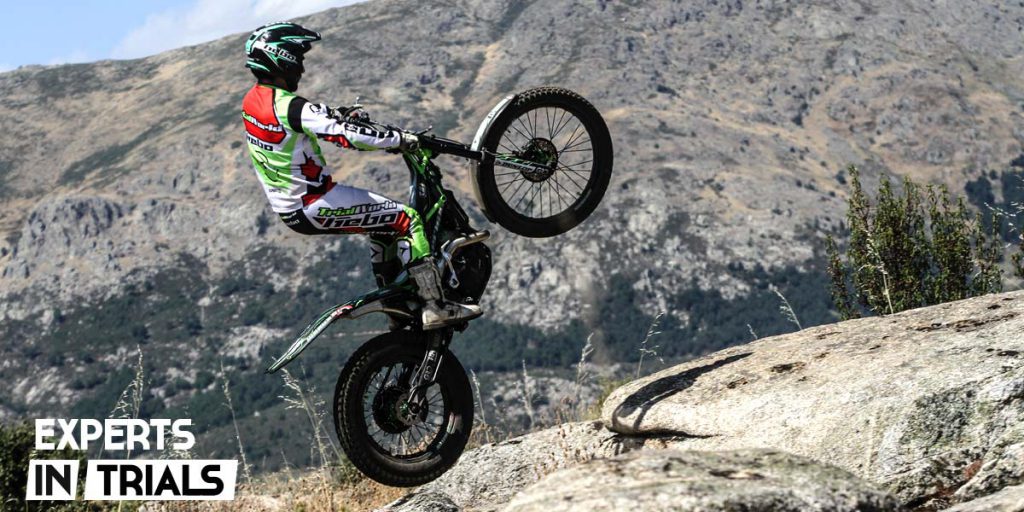
WEIGHT-BASED TRIAL SHOCK ADJUSTMENT
In the case of the rear shock absorber, it is much less frequent to work on the inner body of the shock, unless you are a specialist.
Here you work with the settings of the shock absorber itself or by replacing the original spring with another adapted to our weight.
The market offers us the following options:
Showa trial suspension spring (Montesa Cota 4RT) with three options: (
75 to 85kg, 85 to 95kg and over 95kg)
Öhlins trial suspension spring (GasGas and Sherco) with three options: (75 to 85kg, 85 to 95kg and over 95kg)
Reiger trial suspension spring (GasGas, TRRS, Sherco and Electric Motion) with three options: (
75 to 85kg, 85 to 95kg and over 95kg)
R16V trial suspension spring (Montesa Cota 4RT, Sherco and Electric Motion) with three options: (75 to 85kg, 85 to 95kg and over 95kg)
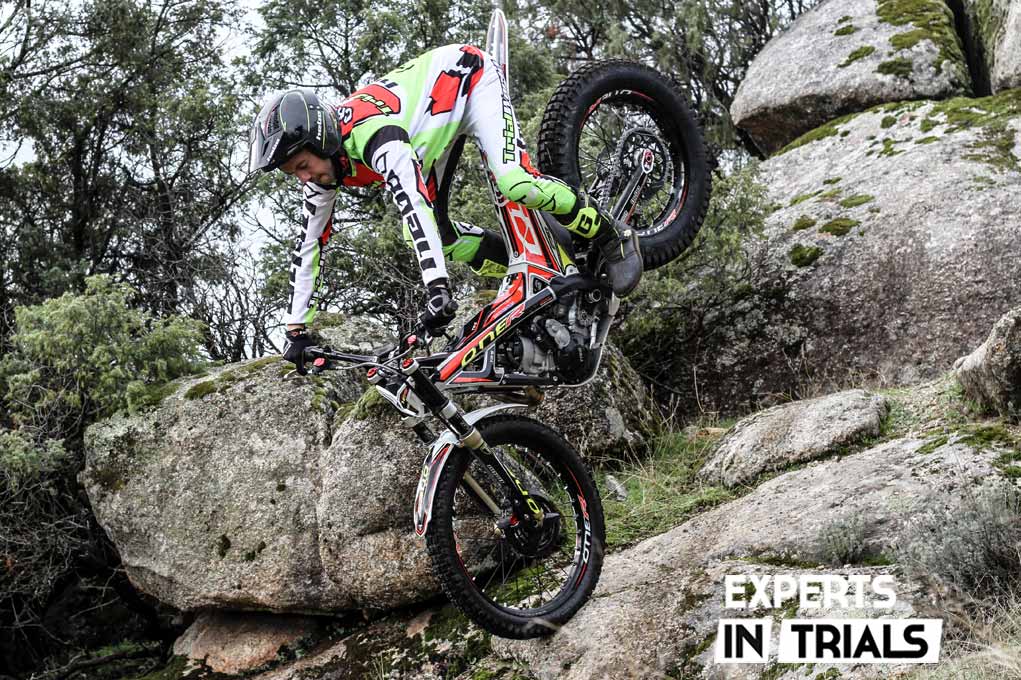
SPARE PARTS, MAINTENANCE, TRIAL SUSPENSIONS
As we do with the rest of the trial bike (carburetor, oil, filters…), the suspensions also require maintenance.
With the passing of the hours and the intervention of external agents such as water, mud and changing weather conditions, it is necessary to pay attention to the elements involved in the suspensions of both axles.
BASIC MAINTENANCE TRIAL FORK
- Keep the bars and fork seals clean after going out to train
- Make sure that the bike rests on a stand, rubbing the front wheel against the ground, but without exerting pressure on the fork
- Check for oil leaks and, if there are, avoid using the bike without the correct oil level.
- Check the health of the overalls, which in certain cases receive a spring-shaped loop to keep them in place
- Avoid using the suspension if it has received a scratch on the fork, as this could damage the seal. It must first be repaired, which basically consists of applying a resin and sanding with very fine sandpaper to prevent edges from occurring.
- Consider using protective wetsuits on the bars.
- Change the oil every 30 hours of use, as a recommendation.
BASIC MAINTENANCE TRIAL SHOCK ABSORBER
- Periodically check for any clearances in the shock linkages. It is checked by lifting the rear axle from the exhaust and calculating the free play of the system.
- Keep the suspensions well lubricated, without accumulation of grease or mud. Regularly check the tightening torques and the condition of the screws.
- As it is a place very exposed to shocks, make sure that if they have been received, they do not affect the performance of the bearings and seals of the linkages.
- Check the condition of the shock mounts to the chassis and linkages. Normally, there are ball joints that in turn have rubbers that can end up disintegrating.
- By extension, the swingarm bearings should also be checked periodically, which also plays a key role in the optimal functioning of the rear axle.
- Check the condition of the buffer inside the shock absorber.
You can find all spare parts for trial suspension and damping at Trialworld Store.
The most common is the maintenance of the seals and dust covers, which although they are economical, the replacement is more laborious. To do this, it is essential that the measure is correct, otherwise it will not perform its function.
We can also take advantage of this operation to check the status of the glaciers in the forks (there is a lower one and an upper one).
Finally, let’s not forget to protect the fork bottles. Although they do not interfere with the direct performance of the compression, care must be taken to keep them isolated from shocks. For this, there are carbon or plastic protections on the market for trial forks of all brands.
